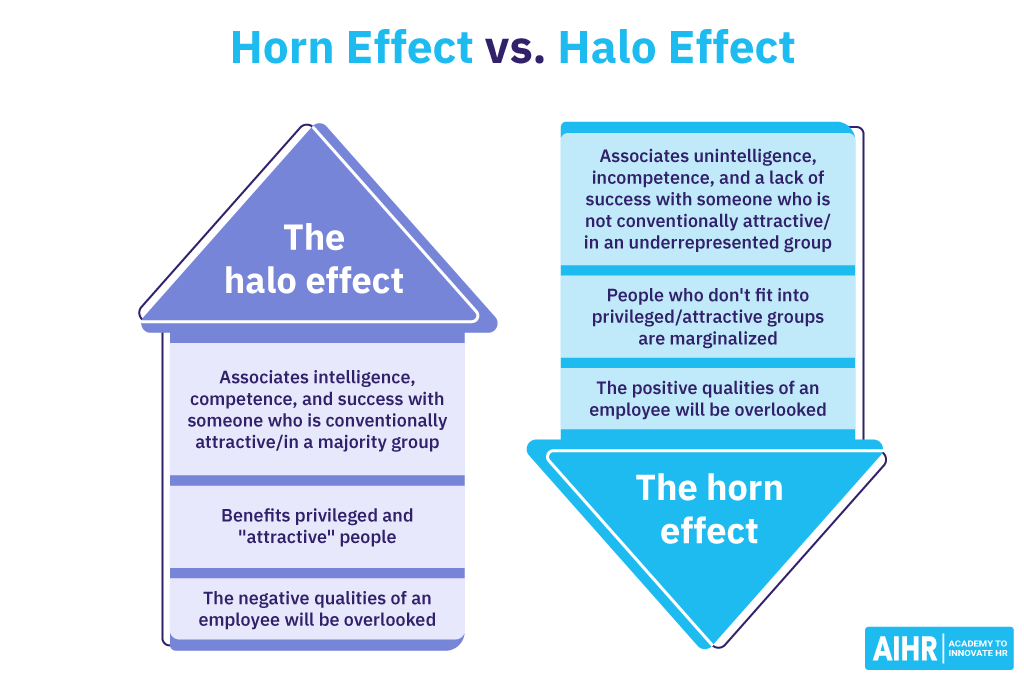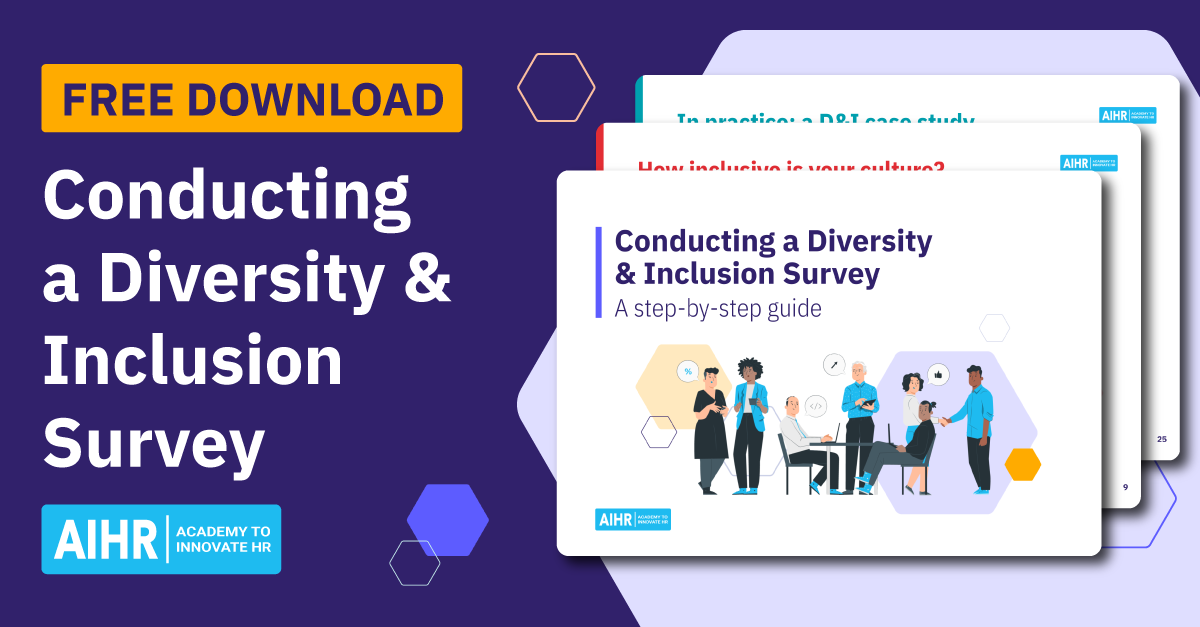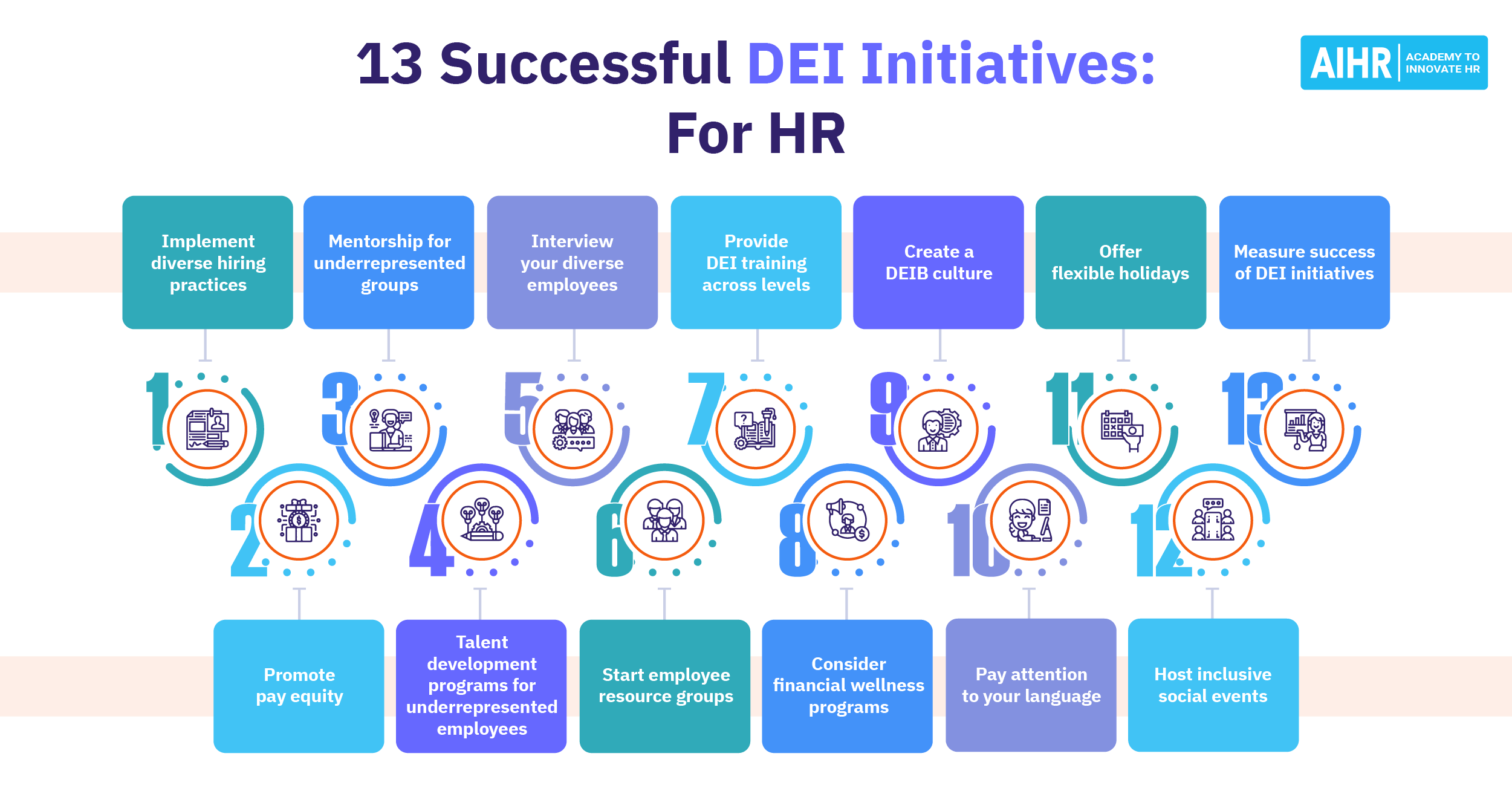Horn Effect
Horn effect meaning
The horn effect is a cognitive process in which negative traits are ascribed to an individual based on appearance or other factors. For example, if someone speaks with a stutter, an employer might immediately think that this person is less intelligent than someone without a stutter.
A study published by Frontiers in Psychology revealed that individuals tend to trust people they perceive as conventionally attractive, while those deemed more “ugly” are trusted less. Additional research indicates that defendants considered unattractive receive longer and harsher sentences compared to those who are seen as conventionally better-looking.
This harmful judgment comes from societal factors and stereotypes that surround non-dominant groups. In other words, the horn effect is a cognitive process that occurs when we attribute negative traits to someone due to our internalized biases.
Horn effect vs. halo effect
The horn effect and the halo effect are two sides of the same coin, each representing cognitive biases that influence how we perceive others based on limited information. Here is how they differ:
The halo effect
- The phenomenon where we associate intelligence, competence, and success with individuals who are conventionally attractive or are part of a majority group.
- Benefits privileged and “attractive” people.
- The negative qualities of an employee will be overlooked.
The horn effect
- The phenomenon where we associate unintelligence, incompetence, and a lack of success with people who are not conventionally attractive or in an underrepresented group.
- People who don’t fit into privileged/attractive groups are marginalized.
- The positive qualities of an employee will be overlooked.

Types of horn effect
The horn effect manifests in various forms, each influenced by distinct factors. Here are some of its different types:
- Physical appearance: This occurs when negative judgments are formed about a potential hire or employee based on their physical appearance. Unfair assumptions can arise due to biases linked to appearance.
- Performance: In this case, an employee’s underperformance in a specific area might lead an employer to generalize and assume that the employee lacks competence in all areas. This type of horn effect stems from overgeneralization.
- Stereotype: The stereotype emerges when certain negative traits are associated with underrepresented groups, encompassing factors such as race, gender, size, disability status, or class. Stereotypes play a significant role in this type of horn effect.
- Communication: This type involves making judgments about individuals based on their communication style. Biases against certain communication patterns or accents can lead to unfair evaluations of a person’s capabilities.
Horn effect examples
| Physical appearance | A candidate walks into a job interview with slightly disheveled clothing and messy hair. Despite being highly qualified for the position, the interviewer subconsciously forms a negative opinion about the candidate’s professionalism and competence based solely on their appearance. |
| Performance | An employee excels in most aspects of their role but struggles with a particular task that requires a specific skill. The manager starts to doubt the employee’s overall capabilities, assuming that their difficulties in this one area indicate a lack of competence in other aspects of the job. |
| Communication | An individual from a different country with a strong accent presents a project idea during a meeting. Some of the colleagues struggle to understand the accent, and their biases lead them to perceive the idea as less valuable, even though the content itself is innovative and well-researched. |
| Age | A middle-aged applicant applies for a tech-related position. The hiring manager, influenced by age-related biases, assumes that older individuals are less adaptable to new technologies and overlooks the candidate’s extensive experience and ability to quickly learn new skills. |
| Educational background | An applicant from a less prestigious university submits a resume for a high-profile position. The employer, influenced by biases associated with educational institutions, assumes that candidates from more renowned universities are inherently more qualified, overlooking the skills and achievements of the applicant. |
The impacts of the horn effect
The impacts of the horn effect are manifold. While it may not affect every individual employee directly, it influences the entire workplace environment, leading to negative consequences for everybody.
- The workplace will be inhospitable to underrepresented employees
- At large, the workplace may be more hostile
- Employers will be less respected and trusted
- The company’s growth will be hindered, as the top candidates may either resign or not be recruited in the first place
- Productivity will suffer because the horn effect may impact employees’ mental health.
How HR can mitigate the horn effect
To mitigate this effect, HR can implement several strategies, including:
- Training and awareness: Providing training for recruiters and hiring managers to raise awareness of subconscious biases and their influence on decision-making.
- Structured interviewing: Use structured interviews with predefined questions and evaluation criteria to ensure consistency in candidate assessments.
- Multiple assessors: Involve multiple assessors in the hiring process to provide diverse candidate perspectives.
- Promote DEIB: Foster inclusivity and a diverse workplace culture
FAQ
The horn effect in the workplace occurs when employers and employees swiftly develop negative perceptions about others due to their appearance, membership in an underrepresented group, or other factors.
The horn effect bias pertains to the negative thoughts we harbor about a candidate based on factors beyond their control.







